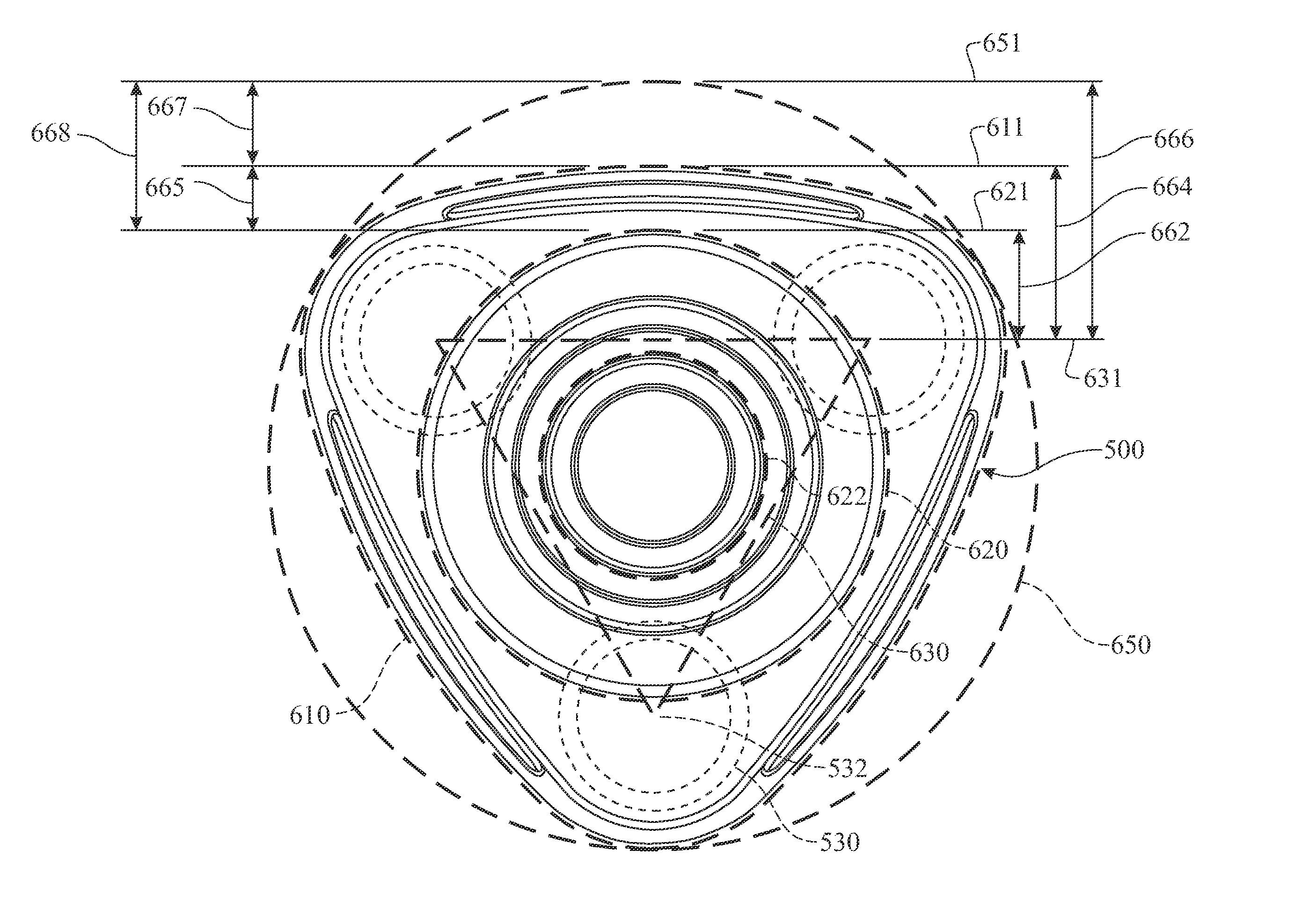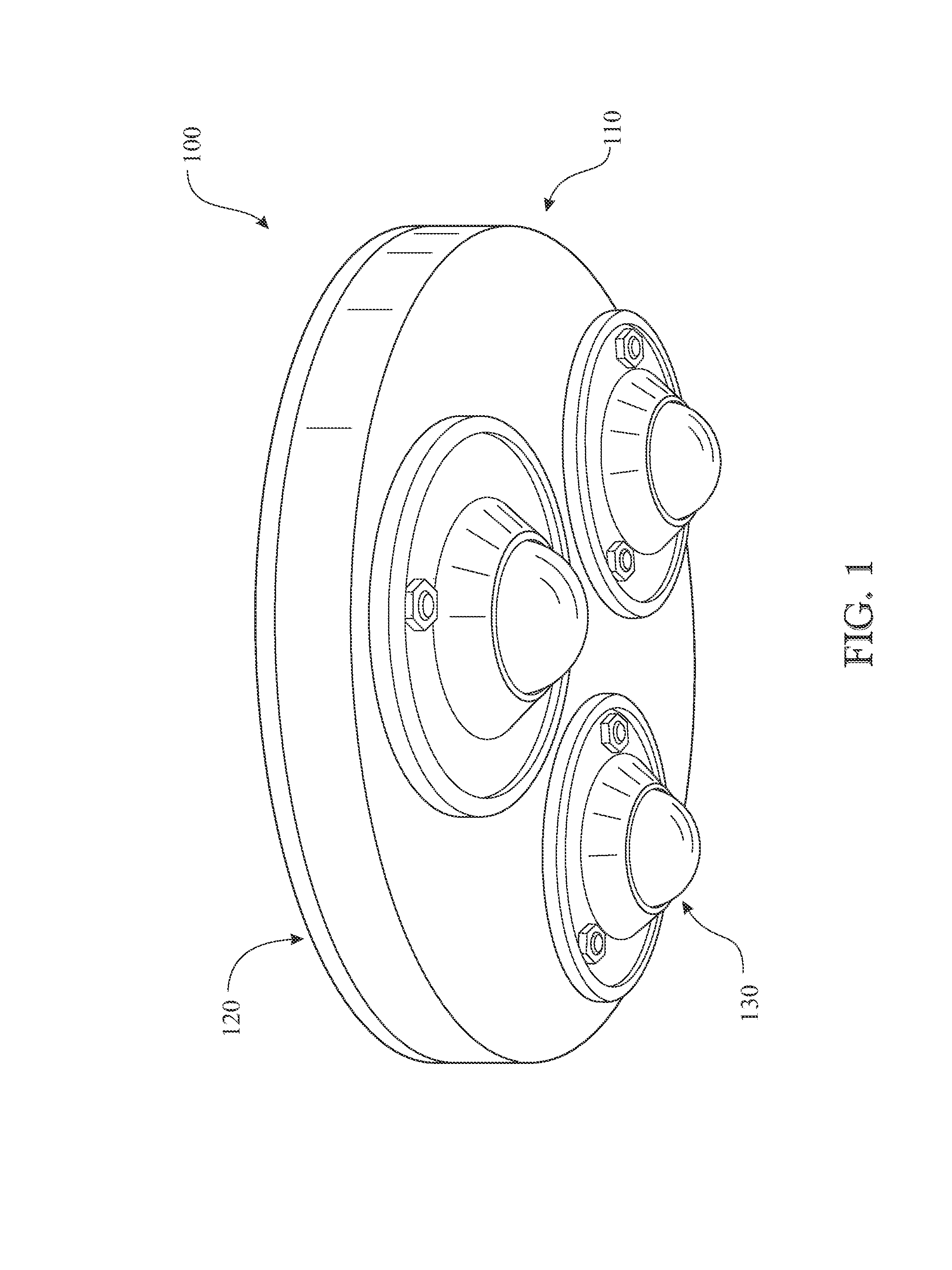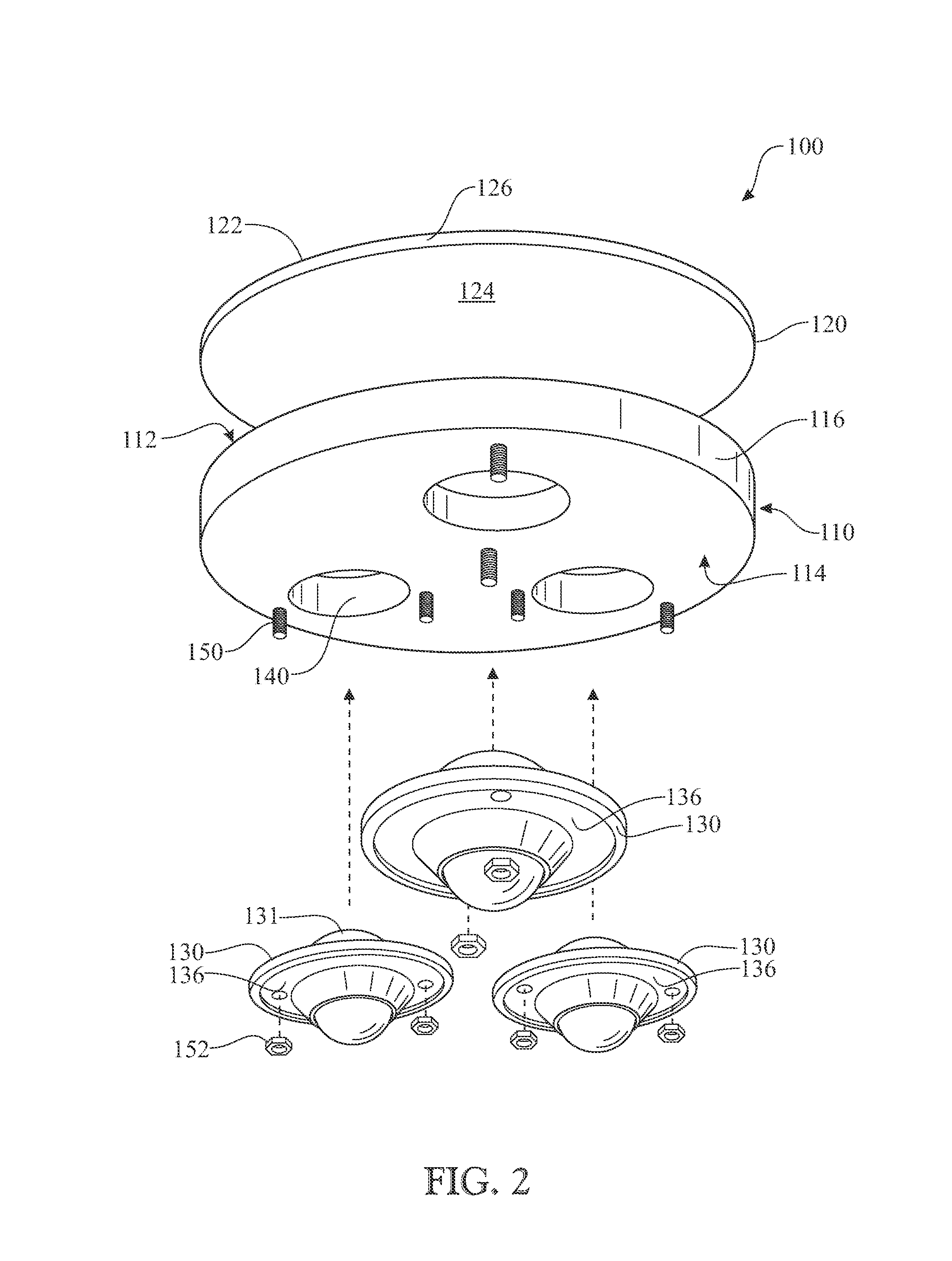It is known that performing the same exercise over and over cause the
human body to adapt to these exercise motions and thereby causing a diminishing return by performing the same exercise repeatedly.
While this known solution is somewhat useful, it presents substantial drawbacks.
Firstly, this device only permits the
handle member to rotate which in turn allows the arms of a user to twist during the push-up.
Secondly, this device does not permit lateral motion of the device along the floor surface and thereby fails to activate many secondary
muscle groups in the shoulders, chest, and back of a person during the exercise motion.
While this known solution is somewhat useful, it presents substantial drawbacks.
This additional force requirement induces an inconsistency in the exercise motion.
Further, this device does not facilitate a smooth uniform exercise motion because the multiple casters must realign prior to changing direction.
This configuration is likely to have increased axle friction under load and thus does not facilitate free motion.
Various exercise devices are known that employ a plurality of ball and cup-type members coupled to a bottom surface of the device and while somewhat useful these known solutions present substantial drawbacks.
These known solutions, while providing some benefit, have a substantial drawback of increased friction between the ball member and hemispherical cup under load conditions.
This type of ball motion
assembly has a substantial portion of the ball member surface area in
sliding contact with the surface area of the hemispherical cup and thereby restricts the free motion of the ball with respect to the cup under load.
Moreover, in these known solutions, as a user increases the load on the device the induced additional friction between the ball and cup prevent the fluid multi-directional movement of the exercise device.
While this known solution is somewhat useful, it presents substantial drawbacks.
Most significantly, this device only provides a
single support ball, which causes the hemispherical support frame to be unstable during use.
However, the exercise device must provide a stable platform by which the exercise can be safely performed and which reduces the possibility of injuring the user.
Although this known exercise device provides a platform that facilitates fluid multi-directional movement during use, this device inherently presents an
increased risk of potential injury to the user.
During use, this high center of rotation is likely to cause an undesired change in direction, due to the
instability of the device, which may injure the hand,
wrist, foot, or
ankle of a user.
This horizontal freedom of movement causes a twisting / torquing of the
wrist joint of the user, which in turn is likely to result in a significant and painful injury to the user.
As discussed above, this known solution presents a similar risk of injury to the
ankle of the user, due to the horizontal freedom of movement, which can induce an undesired twisting / torquing of the
ankle joint.
Additionally, the number of rolling support elements, (i.e. wheels) and the shape of the platform can
impact the stability of the device.
Platform style exercise devices having a single roller provide no level stability and require that the exercising individual exert excess effort to maintain a stable orientation of the device.
Without the extra effort, the device can change the orientation of the limb contacting the device in an undesirable manner.
Platforms comprising two wheels introduce a very limited stability along an axis between the two wheels, but remain unstable about a
rotational axis defined by the two wheels.
Efforts to provide an omnidirectional exercise platform that overcomes the drawbacks in the prior art have not met with significant success to date.
 Login to View More
Login to View More  Login to View More
Login to View More 


